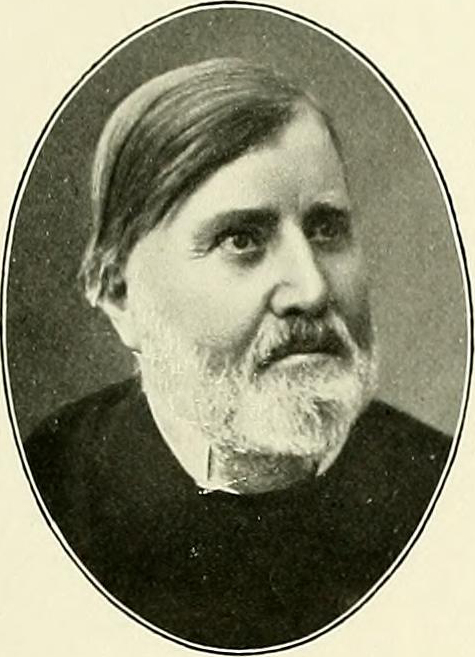|
Galium Perralderii
''Galium perralderii'' is a species of flowering plant, native to Algeria, in the family Rubiaceae. This plant was first described in 1862 by Ernest Cosson. The specific epithet, ''perralderii'', honours Cosson The Cosson () is a long river in central France, a right tributary of the river Beuvron. Its source is near the village of Vannes-sur-Cosson, Sologne. The Cosson flows through the following departments and communes: * Loiret: La Ferté-Saint ...'s friend and fellow botanist, Henri-René Le Tourneux de la Perraudière (1831-1861). References External links * {{Taxonbar, from=Q15452470 perralderii Flora of Algeria Plants described in 1862 Taxa named by Ernest Cosson ... [...More Info...] [...Related Items...] OR: [Wikipedia] [Google] [Baidu] |
Ernest Cosson
Ernest Saint-Charles Cosson (22 July 1819 – 31 December 1889) was a French botanist born in Paris. Cosson is known for his botanical research in North Africa, and during his career he participated in eight trips to Algeria. In several of these he was accompanied by Henri-René Le Tourneux de la Perraudière (1831-1861), whom he honoured in the naming of several species and genera (e.g., '' Perralderia'', '' Galium perralderii''). In 1863 he was elected president of the '' Société botanique de France'', and from 1873 to 1889, he was a member of the '' Académie des sciences''. In 1882 Jules Ferry, as Minister of Public Instruction, decided to create a mission to explore the Regency of Tunisia. The expedition was headed by Cosson and included the botanist Napoléon Doumet-Adanson and other naturalists. In 1884 a geological section under Georges Rolland was added to the Tunisian Scientific Exploration Mission. Rolland was assisted by Philippe Thomas from 1885 and by Georges L ... [...More Info...] [...Related Items...] OR: [Wikipedia] [Google] [Baidu] |
Algeria
) , image_map = Algeria (centered orthographic projection).svg , map_caption = , image_map2 = , capital = Algiers , coordinates = , largest_city = capital , religion = , official_languages = , languages_type = Other languages , languages = Algerian Arabic (Darja)French , ethnic_groups = , demonym = Algerian , government_type = Unitary semi-presidential republic , leader_title1 = President , leader_name1 = Abdelmadjid Tebboune , leader_title2 = Prime Minister , leader_name2 = Aymen Benabderrahmane , leader_title3 = Council President , leader_name3 = Salah Goudjil , leader_title4 = Assembly President , leader_name4 = Ibrahim Boughali , legislature = Parliament , upper_house = Council of the Nation , lowe ... [...More Info...] [...Related Items...] OR: [Wikipedia] [Google] [Baidu] |
Rubiaceae
The Rubiaceae are a family of flowering plants, commonly known as the coffee, madder, or bedstraw family. It consists of terrestrial trees, shrubs, lianas, or herbs that are recognizable by simple, opposite leaves with interpetiolar stipules and sympetalous actinomorphic flowers. The family contains about 13,500 species in about 620 genera, which makes it the fourth-largest angiosperm family. Rubiaceae has a cosmopolitan distribution; however, the largest species diversity is concentrated in the tropics and subtropics. Economically important genera include '' Coffea'', the source of coffee, '' Cinchona'', the source of the antimalarial alkaloid quinine, ornamental cultivars (''e.g.'', '' Gardenia'', '' Ixora'', '' Pentas''), and historically some dye plants (''e.g.'', '' Rubia''). Description The Rubiaceae are morphologically easily recognizable as a coherent group by a combination of characters: opposite or whorled leaves that are simple and entire, interpetiolar sti ... [...More Info...] [...Related Items...] OR: [Wikipedia] [Google] [Baidu] |
Galium
''Galium'' is a large genus of annual and perennial herbaceous plants in the family Rubiaceae, occurring in the temperate zones of both the Northern and Southern Hemispheres. Some species are informally known as bedstraw. There are over 600 species of ''Galium'', with estimates of 629 to 650 The Jepson eFlora 2013. as of 2013. The field madder, '''', is a close relative and may be confused with a tiny bedstraw. '' Asperula
''Asperula'', commonly known as woodruff, is a genus of flowering plants in the family Rubiaceae. It contains 194 spe ...
[...More Info...] [...Related Items...] OR: [Wikipedia] [Google] [Baidu] |
Flora Of Algeria
Flora (: floras or florae) is all the plant life present in a particular region or time, generally the naturally occurring ( indigenous) native plants. The corresponding term for animals is ''fauna'', and for fungi, it is '' funga''. Sometimes bacteria and fungi are also referred to as flora as in the terms ''gut flora'' or ''skin flora''. Etymology The word "flora" comes from the Latin name of Flora, the goddess of plants, flowers, and fertility in Roman mythology. The technical term "flora" is then derived from a metonymy of this goddess at the end of the sixteenth century. It was first used in poetry to denote the natural vegetation of an area, but soon also assumed the meaning of a work cataloguing such vegetation. Moreover, "Flora" was used to refer to the flowers of an artificial garden in the seventeenth century. The distinction between vegetation (the general appearance of a community) and flora (the taxonomic composition of a community) was first made by Jules Thurma ... [...More Info...] [...Related Items...] OR: [Wikipedia] [Google] [Baidu] |
Plants Described In 1862
Plants are predominantly photosynthetic eukaryotes of the kingdom Plantae. Historically, the plant kingdom encompassed all living things that were not animals, and included algae and fungi; however, all current definitions of Plantae exclude the fungi and some algae, as well as the prokaryotes (the archaea and bacteria). By one definition, plants form the clade Viridiplantae (Latin name for "green plants") which is sister of the Glaucophyta, and consists of the green algae and Embryophyta (land plants). The latter includes the flowering plants, conifers and other gymnosperms, ferns and their allies, hornworts, liverworts, and mosses. Most plants are multicellular organisms. Green plants obtain most of their energy from sunlight via photosynthesis by primary chloroplasts that are derived from endosymbiosis with cyanobacteria. Their chloroplasts contain chlorophylls a and b, which gives them their green color. Some plants are parasitic or mycotrophic and have lost the abil ... [...More Info...] [...Related Items...] OR: [Wikipedia] [Google] [Baidu] |


